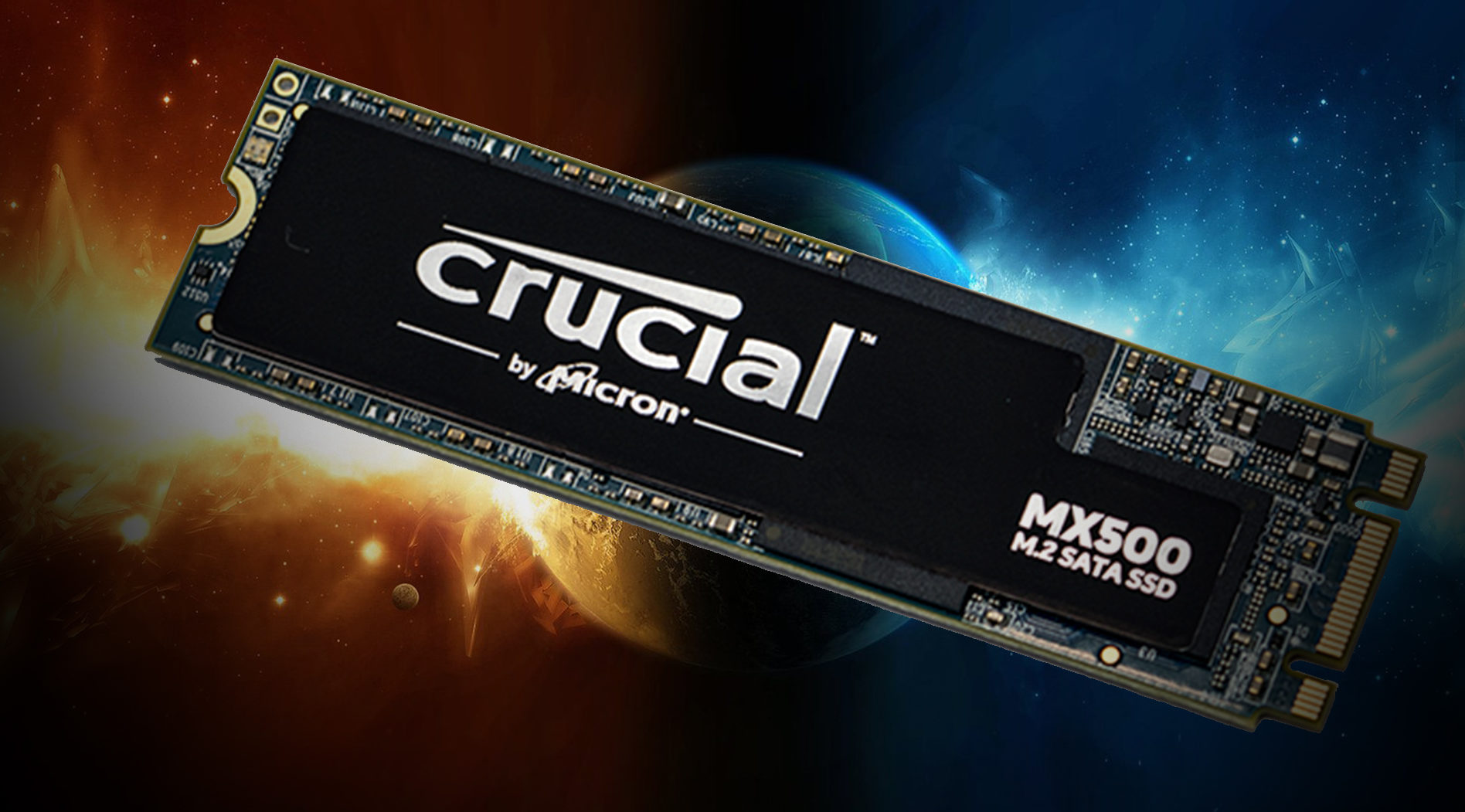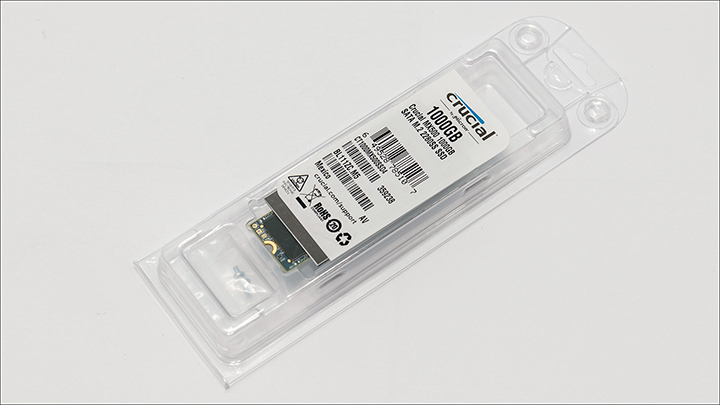
As this is not a 2.5-inch drive it should come as no surprise that the M.2 variant of the venerable MX500 series does not use a relatively large shipping container. Instead, just as with all other M.2 SSDs, it uses a plastic clamshell holder that is down right tiny in comparison. This certainly does make transporting it easier, but the downside is that there is no room for listing the features of the drive housed inside. We doubt many will care, but if you are a new buyer this can lead to confusion when trying to compare the MX500 M.2 to a NVMe M.2 drive. Obviously, you will have to do your homework before going to your bricks and mortar store (or buy it online like most do now) as there you will find all the specifications and features listed. On the positive side you will actually be able to see what you are buying so the chances of picking up a M.2 instead of 2.5-inch MX500 are slim to say the least.
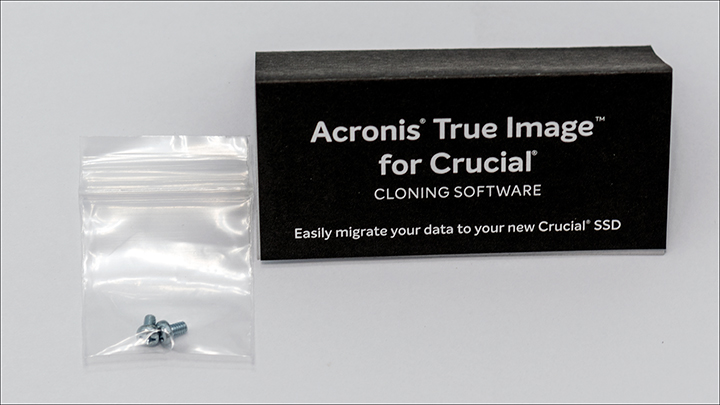
The included accessories are pretty much standard for Crucial as well. Instead of the not needed 2.5mm adapter (that turns the 7mm z-height 2.5-inch model into a 9.5mm one) Crucial includes two M.2 mounting screws. Yes, motherboard manufactures include one… but Crucial is well aware that these little screws do get lost and having a backup and a backup for your backup is not a bad thing to say the least. This really is a great example of how important Crucial values customer satisfaction and the ends they are willing to go to make sure their customers are happy and have as user-friendly device as possible. This also is why they include a (stripped down) version of Acronis True Image. Put another way M.2 MX500 series sets the standard in what all M.2 drives should come with.
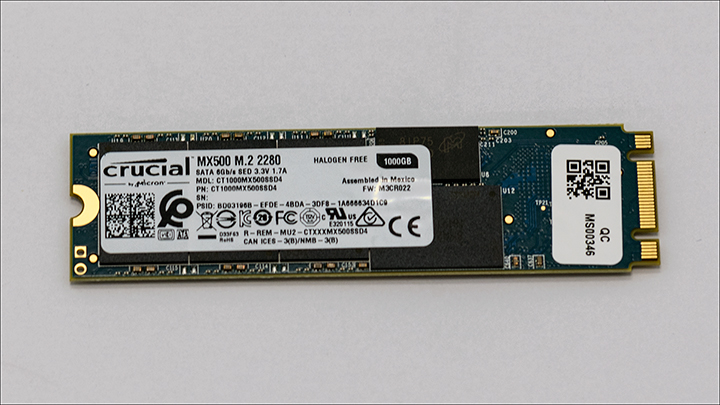
Moving on. The MX500 M.2 1TB does have the exact same number (and type) of NAND ICs, same amount of onboard RAM as the 2.5-inch version. The only difference is that it in order to fit all these components into the M.2 2280 form-factor Crucial had to use a standard M.2 ‘dual sided’ 2280 form-factor layout instead of ‘single sided’. What this means is that is a 22mm wide by 80mm long ‘stick’ with ‘chips’ on both sides of its PCB (compared to ‘single sided’ which only has chips on one side). Barring some oddball motherboards M2280 is the de-facto standard for M.2 storage ports so very, very few people will ever run into a situation where this drive will not fit. A more likely scenario is running in to a M.2 port that is not connected to the ‘south-bridge’ or Peripheral Controller Hub. Basically very, very few motherboards don’t have their M.2 drive connected to both the PCH and the PCIe buses. Instead they are PCIe only. This is a SATA/AHCI controller-based drive so it needs a motherboard ‘SATA controller’ to work. This is rather unlikely as the vast majority of M.2 ports are dual compatible but check your motherboards manual before buying any SATA/AHCI based M.2 drive! On the upside it is properly keyed so it will work in any M.2 port that is SATA/AHCI compatible.
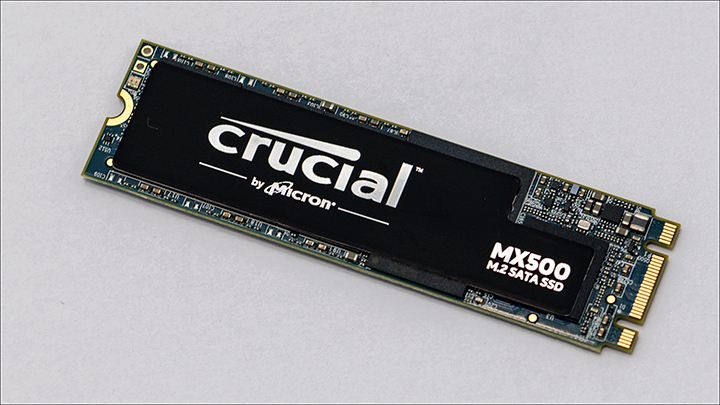
The one major downside to M.2 variants of the MX500 is that it does not come with a large metal heatsink. Like all 2.5-inch SSDs the MX500 uses said chassis as a heatsink for its controller and (some) of its NAND. This is simply not possible with M.2 as z-height restrictions means that there is barely room for ICs on both sides of the PCB. Instead of a large heatsinks Crucial uses a copper-based label that acts as a heat spreader. It is unfortunate that they do not include a second heat-spreader for the backside of the MX500 but that would be rare for SATA/AHCI M.2 drives. Of course, this does mean the back four NAND ICs are passively cooled but the total number of ICs that are tied to a heat spreader/heatsinks is the same as the 2.5-inch version (four) and the controller itself also gets some extra cooling in both variants.
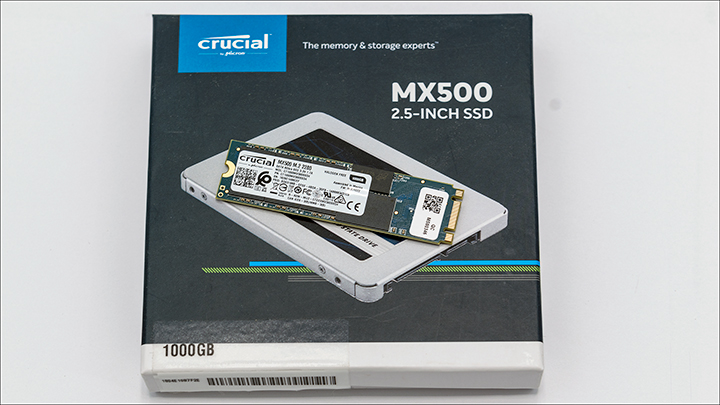
This lack of room also explains why the M.2 MX500 versions top out at 1TB instead of 2TB – as there is not enough room for more NAND ICs and to stay compliant with the M.2 2280 standard Crucial can not go all that ‘higher’ in each NAND slot on the PCB. The upside to this form-factor is that with no metal chassis to block air flow the other four ICs can actually run cooler in the M.2 version than the 2.5-inch version. We will show you exactly what this potential difference means later in the review but in the real world it is not a major difference. It however is a nice fringe benefit for the M.2 MX500 versions… as cooler running NAND means no thermal throttling.
